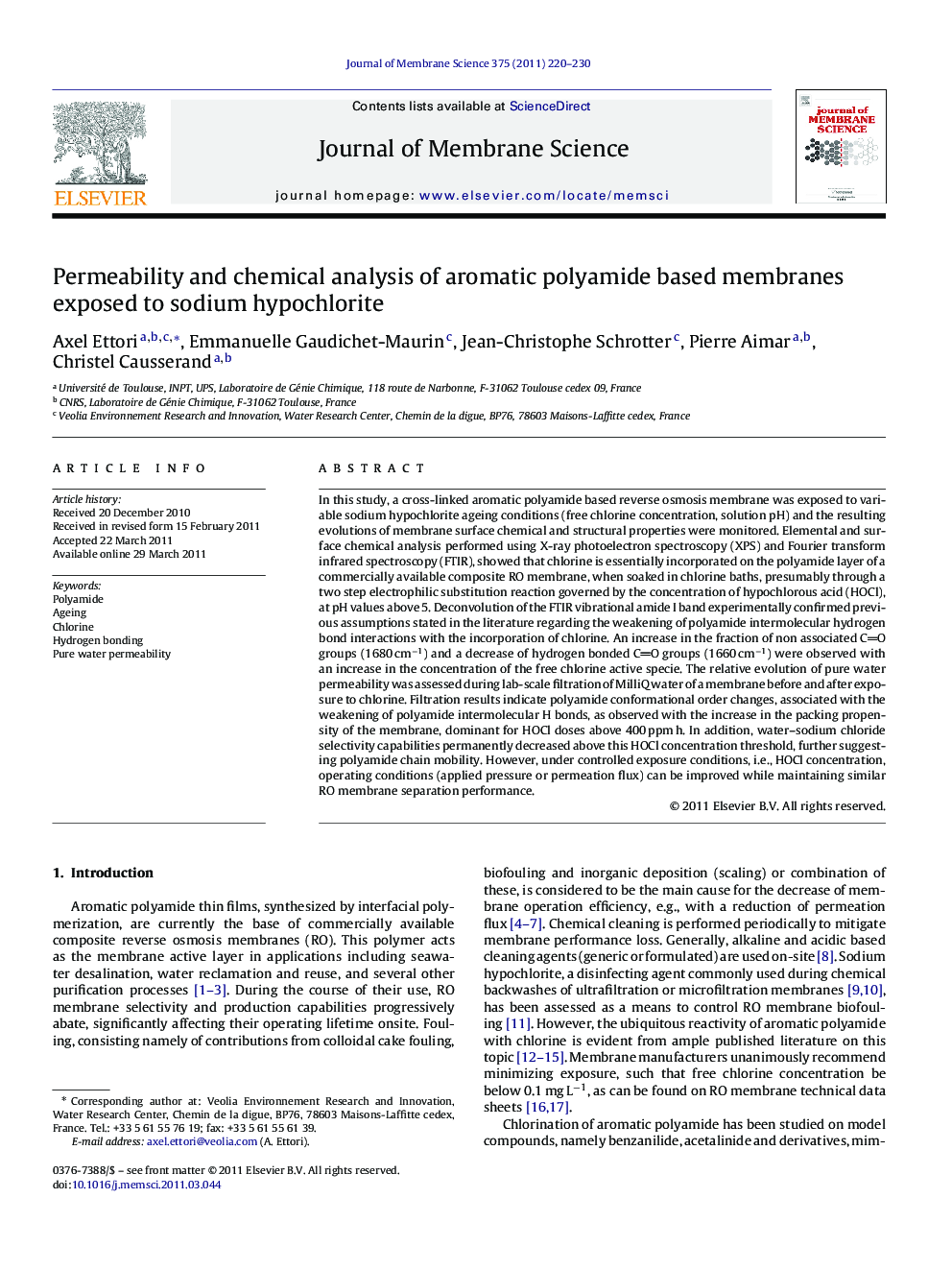| Article ID | Journal | Published Year | Pages | File Type |
|---|---|---|---|---|
| 635765 | Journal of Membrane Science | 2011 | 11 Pages |
In this study, a cross-linked aromatic polyamide based reverse osmosis membrane was exposed to variable sodium hypochlorite ageing conditions (free chlorine concentration, solution pH) and the resulting evolutions of membrane surface chemical and structural properties were monitored. Elemental and surface chemical analysis performed using X-ray photoelectron spectroscopy (XPS) and Fourier transform infrared spectroscopy (FTIR), showed that chlorine is essentially incorporated on the polyamide layer of a commercially available composite RO membrane, when soaked in chlorine baths, presumably through a two step electrophilic substitution reaction governed by the concentration of hypochlorous acid (HOCl), at pH values above 5. Deconvolution of the FTIR vibrational amide I band experimentally confirmed previous assumptions stated in the literature regarding the weakening of polyamide intermolecular hydrogen bond interactions with the incorporation of chlorine. An increase in the fraction of non associated CO groups (1680 cm−1) and a decrease of hydrogen bonded CO groups (1660 cm−1) were observed with an increase in the concentration of the free chlorine active specie. The relative evolution of pure water permeability was assessed during lab-scale filtration of MilliQ water of a membrane before and after exposure to chlorine. Filtration results indicate polyamide conformational order changes, associated with the weakening of polyamide intermolecular H bonds, as observed with the increase in the packing propensity of the membrane, dominant for HOCl doses above 400 ppm h. In addition, water–sodium chloride selectivity capabilities permanently decreased above this HOCl concentration threshold, further suggesting polyamide chain mobility. However, under controlled exposure conditions, i.e., HOCl concentration, operating conditions (applied pressure or permeation flux) can be improved while maintaining similar RO membrane separation performance.
Graphical abstractFigure optionsDownload full-size imageDownload high-quality image (127 K)Download as PowerPoint slideHighlights► Incorporation of chlorine on polyamide results in the weakening of intermolecular H bonds. ► Deconvolution of FTIR spectra provides experimental demonstration of this phenomenon. ► Packing propensity (during pure water filtration) is dominant above exposure to 400 ppm h HOCl. ► Water/NaCl selectivity capability is permanently altered with exposure to HOCl. ► Under controlled chlorine exposure, RO performance (applied pressure, flux) can be enhanced.
